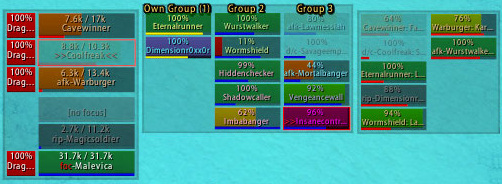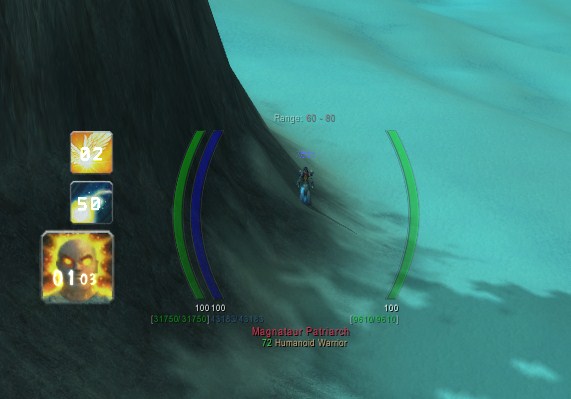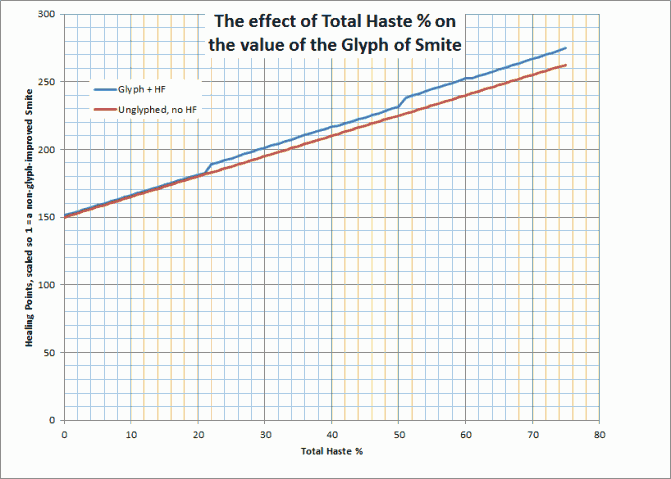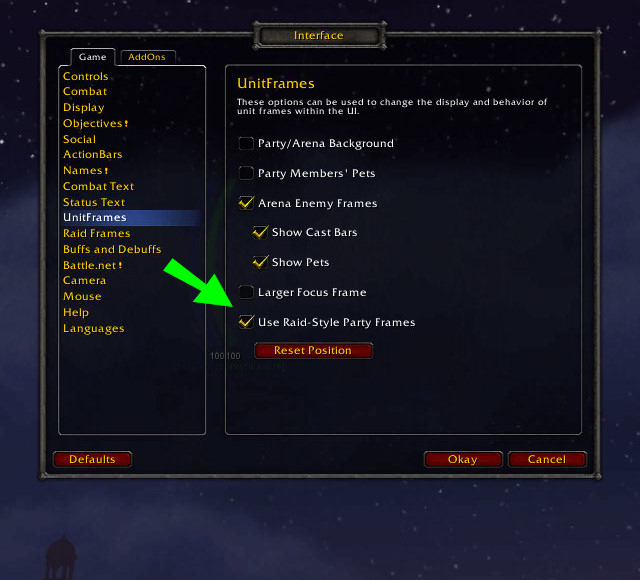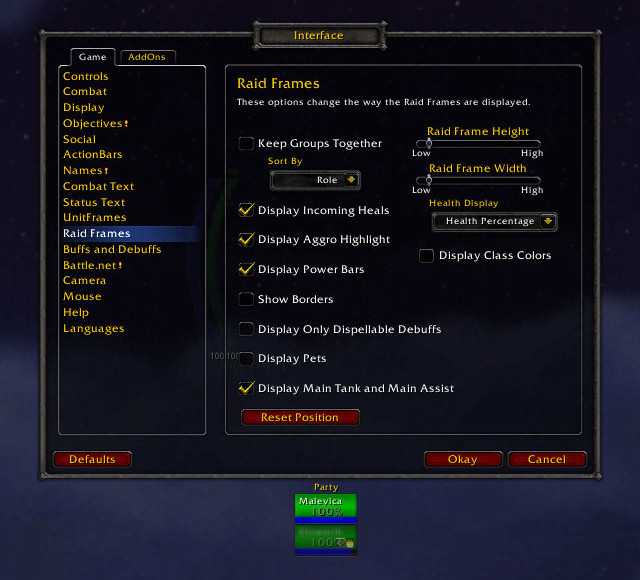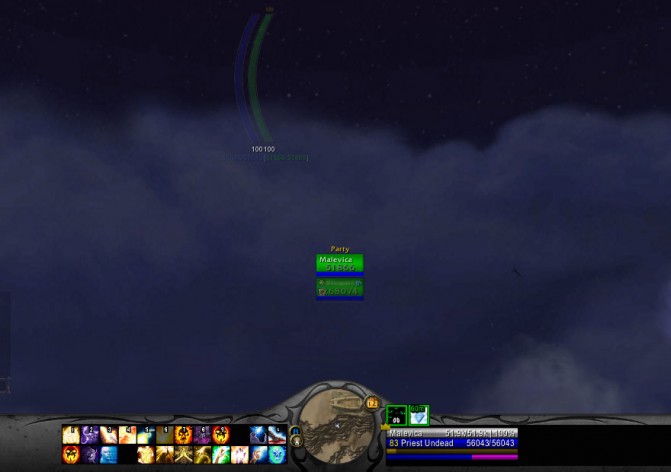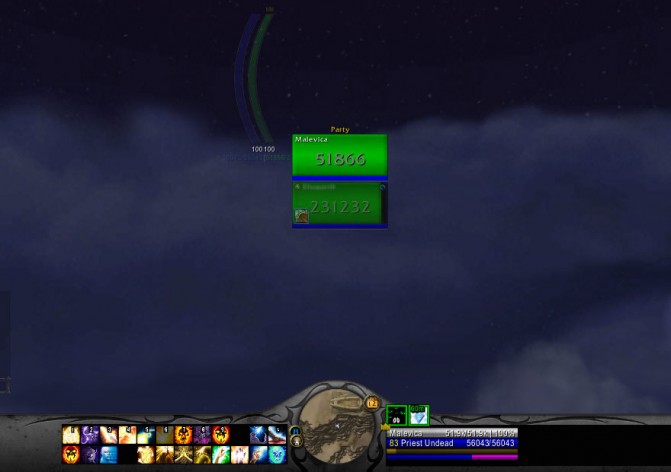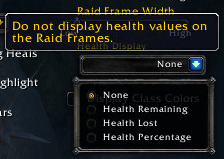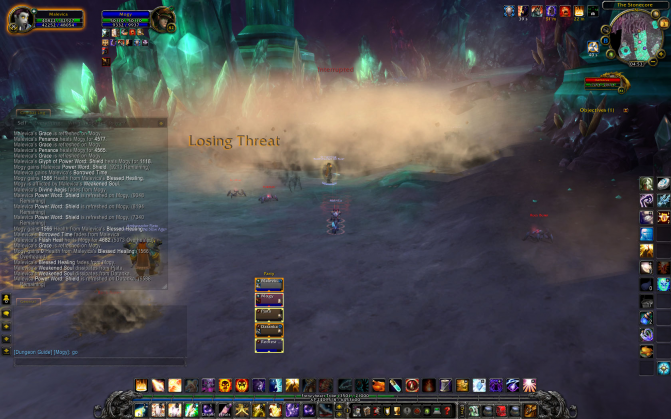
I was listening to the My Epic Heals podcast recently, and in Episode 3 Fox, Eade and Wolf were answering an email question asking about how to break into healing for the first time. Inspired, I thought I’d add my take on that question. I’ll probably repeat a few of the things they said, for the sake of completeness.
Before You Begin
Heard about all the sweet Call To Arms rewards and want to get in on the action? Have a strange green box fetish you just have to indulge? Conscientious objector who just can’t bear the thought of harming another soul? Whatever your reason, you’ve decided you want to find out for yourself what this “healing” thing is all about.
The first thing to say is: great! Welcome to the club!
The second thing to do is answer the question which inevitably comes next: Which class should I pick?
Oh boy. This one comes up a lot, and it’s probably the hardest one to answer properly. The thing is, each class has its own style, its own strengths and weaknesses, and which you should play is going to depend mostly on your own personal preference.
Druids tend to rely a lot on instant-casts and heal-over-time (HoT) spells. The plus side is that you can be very mobile and can put out a ton of healing on multiple people at once, but you might find it a bit stressful if you can’t handle bars being half-empty and only slowly filling up. You do get a cool shapeshift though, albeit on a long cooldown.
Paladins are great if you like to really focus on a task, since most of the heals they cast are still single-target focused and they have a lot of mechanics to watch out for and react to (Holy Power and the Daybreak proc, for example). One downside of levelling a Paladin healer is that Holy gear is very different from Retribution and Protection gear, meaning that if you want to heal your way up you’ll either have to level Holy or maintain an entirely separate gear set.
Shaman are very versatile healers, and can fill both tank- and raid-healing roles at end-game pretty smoothly, which is a strong factor in their favour. Restoration can also share gear with Elemental so you can have a DPS spec while questing. Finally, Shaman can also provide a huge range of buffs to their party using their totems, so you can be an asset to any team you join.
Priests are also extremely versatile healers, to the point where they have two entire talent trees dedicated to different styles of healing. Priests can also fill any role in a raid at end-game, and have a huge range of abilities at their fingertips. The flipside of this is that you may find that a Priest has too many options, particularly if you’re not a grizzled veteran player.
Ultimately the choice is yours. The only way to tell is to jump in and level one, preferably to level 30 or above, and see how you like it. Please don’t try and pick the “best” class, or the one that’s most in demand, or the one that’s top of the healing meters on WoL or try and force yourself to play a class if you’re just not feeling it; you’ll just burn out quicker and won’t enjoy your game. All the healing classes can play a valuable role in any team, so play the one you get along with the best.
Low Levels
When to Heal?
Once you’ve picked your healing class, I’d recommend you start healing as soon as possible so that you can find out if the class works for you, if you like healing after all, and so you can begin to get to grips with your healing interface. The Dungeon Finder unlocks at level 15, so you can get going pretty quickly once you’re out of your starter zones.
If you can find friends then obviously group with them because they’ll be more understanding if you need to take things slow while you learn, but at low levels people won’t expect too much so you can safely PuG if that works better for you.
I’d also recommend that you talent for healing right off the blocks. This isn’t strictly necessary at low levels but it will help you out, especially now in the Cataclysm world where you’ll get a special signature ability at level 10, just for picking a healing tree to specialise in. Those abilities are Earth Shield for a Shaman, Swiftmend for a Druid, Holy Shock for a Paladin and Penance and Holy Word: Chastise for Discipline and Holy Priests respectively. Holy Priests need to be level 51 to get healing benefits from HW:Chastise, but the other classes get a healing spell with their talent trees.
Questing as a healer at low levels, up to 30 or so, isn’t significantly slower than levelling as a DPS, although as the levels get higher the difference becomes more pronounced. However even late in the game, while questing as a healer is undoubtedly slower and more arduous than questing as a DPS, it’s really not the impossible task it used to be. But bear in mind that you’ll probably want to spend a bit more time instancing and stay in zones with yellow quests rather than orange.
How to Heal
If I tried to give specific healing strategy for every class here then I’d end up making this guide a lot longer than it needs to be, but there are some things in common.
In general, by the time you reach level 20 you’ll have access to at least two heals: one will be quick and expensive, while the other will be a bit slower but more mana-efficient. You’ll need to use your judgement as to which is most appropriate: is your target about to die? Use the fast one. Are you running out of mana a lot? Lean on the slower one a bit more. As you level up you’ll add more abilities to your toolkit, and you’ll need to figure out where they’re best used and how many you can afford to cast. You may well make mistakes and get things wrong, but developing that judgement is a key part of learning to be a good healer.
The other thing you’ll need to learn is triage. Sometimes, usually when something’s gone a bit awry with the fight, there’ll be simply too much damage for you to heal through. At this point, rather than panicking you’ll need to learn to prioritise where your limited healing goes, and sometimes that will mean letting someone else die. Triage is as much an art than a science, and is something that you’ll eventually learn to do instinctively.
The basic priority for healing is:
You —> Tank —> DPS
The reasoning is that if you die then the tank will probably die soon afterwards and the fight will probably end messily very shortly; If you’re ok, then you need to keep the tank alive rather than a DPS, because you can survive without one DPS player, but you won’t survive long with a dead tank.
Obviously there are exceptions, and you’ll figure them out in time, but to begin with focus on keeping yourself and the tank alive.
User Interface
I’d recommend that you install and get used to using a few addons as early as possible, to make life easier and because low levels is the best time to learn to work with your UI. You might already have a UI that you love, but there are some healer-specific pointers that will help:
- Look into custom party- or raid-frames such as VuhDo, Grid+Clique or Healbot. Healing involves a lot of muscle memory and click-casting or using mouseover macros on raid-frames is the way it’s generally done at end-game, so you might as well get used to it now. While you’re learning is also the best time to figure out what you need your raid frames to show you and where you want to look for it, so you can constantly tweak the configuration of your addons as you go.
I’d suggest starting with VuhDo because it’s quite useful out of the box and easy to set up. There’s also an excellent setup guide on the author’s website and really phenomenal support provided by the author and others at in a dedicated forum at PlusHeal (hi zohar101!).
Gina at Healbot.net (not related to the addon!) wrote up a great guide to raid-frames recently, so go there for more help deciding. - Consider addons to alert you prominently to events and procs so you don’t miss a vital opportunity. Blizzard has included some funky graphics for some abilities but not all. If you want to get complicated then you can’t beat Power Auras Classic, but there are other solutions such as TellMeWhen for just about everything or OmniCC for ability cooldowns.
Also remember that you can include sound notifications with most of these sorts of addons. This is an often overlooked aspect of UI design, but can be really helpful for giving you information without requiring you to move your eyes elsewhere on the screen. - When building your UI, think about the layout carefully. You will need to be able to see around your character’s feet so you don’t stand in fire, but you also want to keep all the information you want to use as close together as possible, to minimise eye movement all over the screen.
Finally, remember the golden rule: your UI should show you all the information you need, no more, and no less.
[I’ve got a full UI post in the works, so look for that soon!]
Psychology
As you get into healing, you’ll begin to come across some of the social or psychological aspects of healing that are common to all levels.
Most notably: people will die, and it might well be your fault. That’s ok! Maybe you picked the wrong target or the wrong spell, or you burned through your mana quicker than expected, or you completely forgot which combination of buttons and keys controls Chain Heal; those are things that everyone does while learning (and even when you should definitely know better!) so pick yourself up, apologise to your group and move on. That’s one of the best reasons for starting early, especially if this is your first healer.
You’ll also learn to spot when these problems aren’t your fault. If you have three people in your random dungeons who all seem to be tanking one creature each, you’re probably going to find yourself struggling to keep them all alive; that’s why we have tanks, after all, they take less damage. Firstly, you can use your new-found triage skills to let the idiot DK unfortunate damage-dealer die to save the tank. Then you can communicate with your group, explain your difficulty, and hopefully they’ll adapt and make your life easier.
Or they might vote kick you, in which case you were better off without them. Just hop back in the queue and you’ll almost certainly get a better group the next time around.
Switching At Eighty-Five
But what if you’ve got your Paladin, Priest, Druid or Shaman to 85 and really fancy taking up healing?
The first thing to do is to go back to the paragraphs above, if you skipped them, and check the sections on “How to Heal”, “User Interface” and “Psychology”. They’re probably still relevant to you too. You’ll still need a basic grasp of triage, a UI with the right information on it, and to have some idea about what healing might entail.
Assuming that’s all in place, there’s a few extra things to bear in mind when switching role at end-game.
The big difference is that the level 85 world is a lot less forgiving than the level 25 world. People have an expectation, reasonable or otherwise, that you know what you’re doing by the time you get to max level. Therefore a bit more preparation is required.
Spells and Abilities
At 85 you’ll suddenly be presented with a full toolkit of spells and abilities to use, and unlike at low levels where you’ll have a few levels between each new one to learn how it works, you’ll be expected to know what they’re all for right away.
There are a number of ways you can gain this knowledge. The first ones that gets mentioned are Elitist Jerks or PlusHeal. EJ tends to have a single discussion thread per spec, which can get quite long, but these threads usually begin with a huge mega-post with the current best practice in (usually titled “Compendium” or similar). PlusHeal tends to be more discussion-based, with threads discussing questions about stat priority, spell usage, and so on. You usually can’t go far wrong with a trip to your EJ thread for an overview of what spells are good for a given situation.
As a caveat though, EJ is explicitly raid-focused, so you may need to be a little careful about their recommendations if you’re doing 5-man normals, but the general thrust of the advice will be sound.
You could also have a look at the many excellent blogs out there, and see what they’re recommending. There are plenty of guides to 4.1.0 for every class.
There are other alternatives to just reading what to do. You could browse World of Logs for other guilds, on your server or beyond, and look for other people in similar content to you. You can then have a look at what they’re doing and compare their spell usage to your own. This again tends to be raid-focused, but if you look for people doing entry-level raiding it’ll be a useful pointer.
And let’s not forget that you can always ask other people for advice. Don’t ask Trade, you probably won’t get many useful responses, but if you have a friendly healer in your guild or someone with an alt of your class, try whispering them when they’re not busy or posting on your guild’s forums and asking for some tips. Often people will be quite willing to spend time talking about how they play with someone taking an interest.
Gearing
If you’re a Balance Druid, Elemental Shaman or Shadow Priest, you have an easier time of gearing up than a Feral Druid, an Enhancement Shaman or a Protection or Retribution Paladin because you’ll already have gear with Intellect on it, and you might have a fair amount of Spirit as well.
For your starter gear set, you’re looking to get anything you can with Spirit and Intellect on it. As you gear up then you might consider the secondary stats, but initially just make sure you have spirit on everything, reforging if you have to, so that you can last the fights before running out of mana. Sometimes people recommend picking up crafted blue-quality PvP gear to replace your worst pieces. This can be a good route to getting some higher itemlevel healing gear, but avoid filling too many slots this way because most of the PvP gear doesn’t have Spirit on it, and you can’t reforge the Resilience into Spirit, so you’ll end up a lot weaker than your itemlevel might suggest, and you might be allowed into heroics before you’re really equipped for them.
When you get into enchanting and gemming your gear is a bit of a personal preference, depending on your circumstances. If you have the cash to spare I’d encourage you always to go in fully enchanted and with blue-quality gems all over, to give yourself the best advantage you can. Likewise, consider popping a flask if you’re going to be running a lot of dungeons in a row; flasks are a massive stat boost, and persist through death.
Practising – Battlegrounds
Something I’ve used in the past, and something the Epic Heals guys mentioned too, is taking your new spec and UI into the battlegrounds. This is a great opportunity to check if your UI actually works for healing (you’d be amazed!) and to get used to the mechanics of healing in a less pressured environment. I’d suggest something bigger like Alterac Valley or Isle of Conquest rather than Warsong Gulch, just so you don’t have too much of an impact on your team if things don’t go smoothly.
The thing with the battlegrounds is that there’s almost always someone taking hurt that you can heal, and there’ll be dangers for you to survive while you’re doing it. At the same time, people expect to be dying a lot and so you probably won’t get yelled at when they do. And there’s often a lack of healers in battlegrounds, so anything you can do is better than nothing.
Your First Run
When you enter a dungeon for the first time hopefully you”re as prepared as possible and you’ll do fine. But it’s still important to communicate to your group. I strongly recommend mentioning to them upfront that you’re a fairly new healer, and politely ask them to take it slow or to be gentle with you. Most groups will accommodate you, since wiping is slower than just taking their time, but if they don’t, or they’re abusive, just wish them well and drop group. You’ll get another group soon enough, and you won’t learn much if the group isn’t going to work with you.




